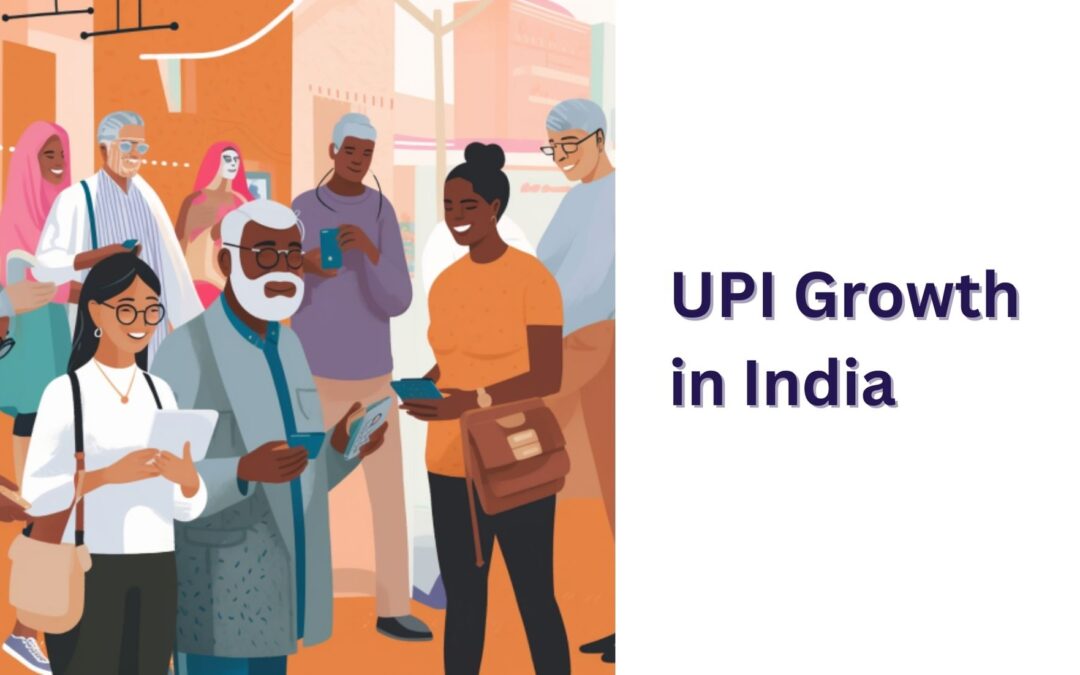In recent years, the landscape of digital payments has witnessed a remarkable transformation with UPI growth in India. The advent of the Unified Payments Interface (UPI) has ushered in a new era of financial convenience and accessibility for millions of Indians.
In this article, we will explore the phenomenal growth of UPI in India, its impact on the economy, and the future prospects it holds.
Understanding UPI
Before delving into the growth story, let’s grasp the fundamentals of UPI. UPI is a real-time payment system developed by the National Payments Corporation of India (NPCI). It allows users to link multiple bank accounts to a single mobile app and make instant, secure, and hassle-free transactions.
The UPI Revolution
1. Rapid Adoption
The growth of UPI in India has been nothing short of spectacular. Since its launch in 2016, it has gained widespread popularity. The ease of use, availability across various banks, and support for multiple languages have contributed to its rapid adoption.
2. Increasing Transaction Volume
One of the most significant indicators of UPI’s success is the exponential increase in transaction volumes. From humble beginnings, UPI now records billions of transactions every month, making it one of the world’s largest digital payment platforms.
3. Encouraging Financial Inclusion
UPI has played a pivotal role in advancing financial inclusion in India. It has empowered individuals in remote and underserved areas to access banking services, bridging the urban-rural divide.
4. Boosting E-commerce
The e-commerce sector in India has flourished thanks to UPI. Online shoppers prefer the convenience and security offered by UPI payments, contributing to the growth of online businesses.
What is the Growth Rate of UPI in India?
The growth rate of UPI in India is nothing short of astonishing. Since its inception in 2016, UPI has consistently demonstrated a phenomenal annual growth rate of over 100%. To provide some concrete figures, in 2016, there were a mere 93,000 UPI transactions per month.
Fast forward to 2021, and India was recording over 3.5 billion UPI transactions per month, showcasing a staggering compound annual growth rate (CAGR) of approximately 4490%. These numbers underscore the meteoric rise of UPI in the Indian digital payments landscape.
What is the Future Growth of UPI?
The future growth prospects for UPI in India are exceptionally promising, backed by robust statistics. Projections indicate that by 2025, UPI transactions could exceed 10 billion per month, sustaining an impressive CAGR of over 35%.
This anticipated growth is supported by factors such as increasing smartphone penetration, expanding internet access, and the government’s continuous push for digital financial inclusion. The numbers suggest that UPI is set to become an even more integral part of India’s financial ecosystem.
How Fast is UPI Growing?
UPI’s growth rate is nothing short of spectacular. In 2020 alone, the total transaction value on the UPI platform exceeded 4 trillion INR (Indian Rupees), marking a year-on-year growth of nearly 1,000%.
Furthermore, the number of UPI transactions in December 2020 surpassed 2 billion, demonstrating the platform’s breakneck speed of adoption. These statistics illustrate the swift and dynamic growth trajectory of UPI.
The Impact on the Indian Economy
1. Cashless Economy
UPI has been a driving force behind the government’s vision of a cashless economy. It has reduced the reliance on physical currency and curbed black money circulation.
2. Enhanced Security
With robust security features, UPI has instilled confidence in users. Fraud prevention measures have made digital transactions safer than ever.
3. Simplified Government Payments
The government has leveraged UPI to disburse subsidies and benefits directly to beneficiaries’ bank accounts, reducing leakages and ensuring efficient delivery of services.
4. Fintech Innovation
The UPI ecosystem has spurred fintech innovation, leading to the development of innovative apps and services, further enriching the digital payment experience.
How Successful is UPI in India?
UPI’s success in India is quantifiable by several key metrics. First, it has achieved over 200x growth in monthly transaction volume from 2017 to 2021, a testament to its widespread acceptance. Second, UPI has facilitated financial inclusion on an unprecedented scale, with over 250 million unique users as of 2021.
Finally, it has significantly contributed to the government’s goal of reducing cash usage, with cash transactions declining by approximately 25% between 2019 and 2021. These figures underscore UPI’s undeniable success in revolutionizing India’s digital payments landscape.
UPI Growth in India: Future Prospects
The journey of UPI in India is far from over. It continues to evolve, with several promising developments on the horizon.
1. International Expansion
UPI’s success has piqued the interest of other countries. There are efforts to expand its reach globally, potentially making it a global standard for digital payments.
2. Biometric Authentication
Enhancements in biometric authentication, such as fingerprint and facial recognition, are being explored to add an extra layer of security to UPI transactions.
3. Integration with Wearables
The integration of UPI with wearable devices like smartwatches and fitness trackers is in the pipeline, making payments even more convenient.
4. AI-Powered Insights
Artificial intelligence and machine learning are expected to play a significant role in providing users with personalized financial insights and recommendations.
Conclusion
The UPI growth story in India is a testament to the nation’s ability to embrace technological advancements. It has not only simplified payments but has also contributed to financial inclusion, economic growth, and innovation. As UPI continues to evolve and expand its horizons, it remains a beacon of progress in the world of digital finance.

